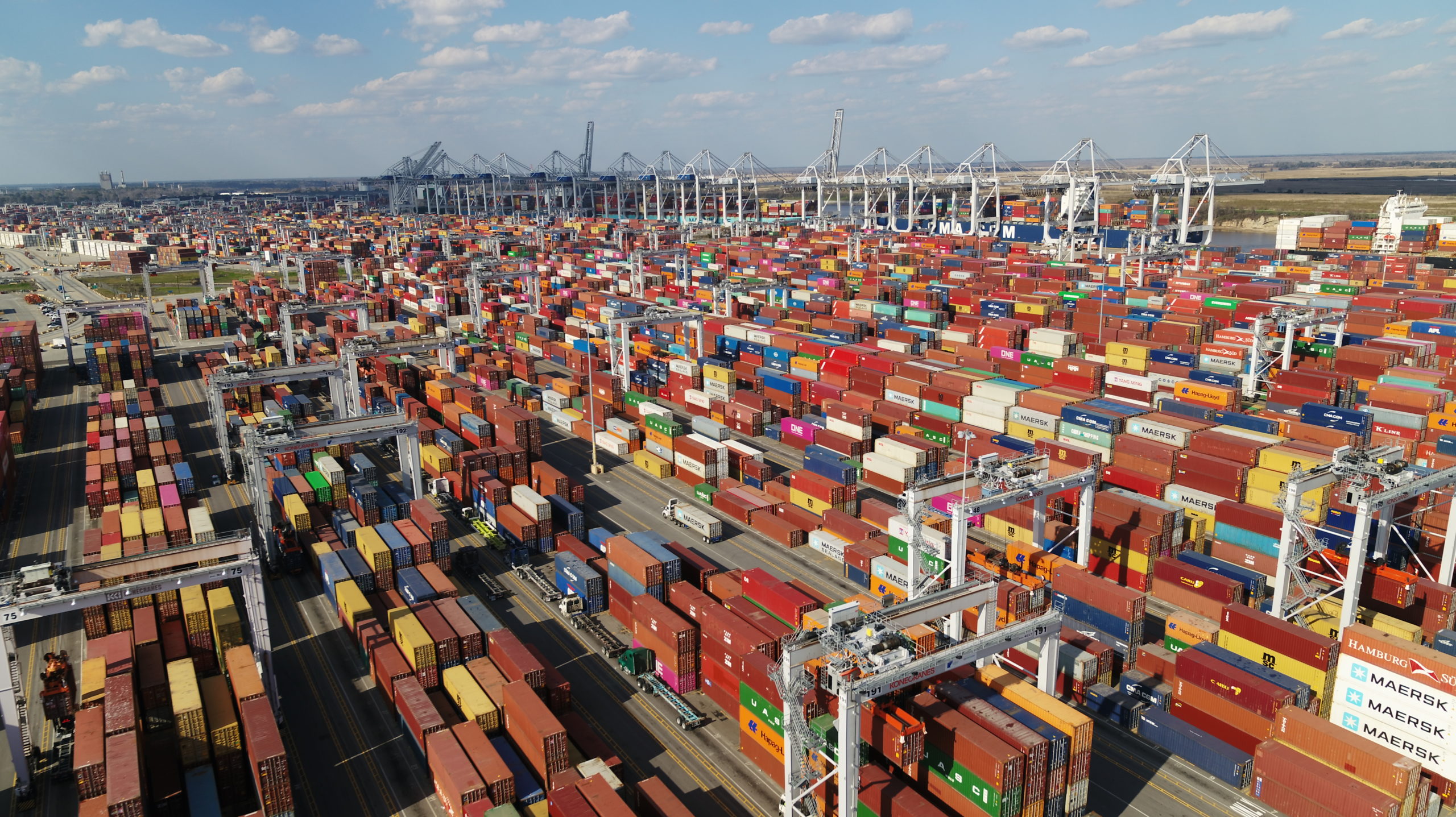
For the first time in its history, the Port of Savannah has moved 5.3 million twenty-foot equivalent container units, growing cargo volumes by 20 percent in FY2021, or nearly 900,000 TEUs compared to the previous year.
“American companies continue to choose the Port of Savannah as a critical gateway to global trade,” said Georgia Gov. Brian Kemp. “Our ports play a major role in Georgia being named the number one state for business eight years in a row. I am thankful to GPA for their great work over the past year to grow Georgia’s trading capacity and expand our world-class business environment.”
Incoming GPA Board Chairman Joel Wooten thanked previous Chairman Will McKnight and Gov. Kemp for their leadership during a challenging year, as well as the partners and customers who helped Georgia Ports achieve record growth.
“GPA leadership, our employees and our partners across the logistics community put in tremendous effort to make this milestone possible,” Wooten said. “Growing our business by 20 percent in a single year is an amazing accomplishment and secures Savannah’s position as the fastest growing gateway in the nation over the past 10 years.”
GPA Executive Director Griff Lynch said the Savannah Harbor deepening, the Mason Mega Rail terminal and other capacity enhancements are not only preparing GPA for the present influx of cargo, but also for future demand.
“A major strength for the Port of Savannah is its ability to respond to the needs of customers as they expand their positions in Georgia,” Lynch said. “As port users continue to route additional cargo to Georgia, we are bullish on the future. We have an abundance of near-port property available for development, and GPA is right now adding millions of TEUs of additional capacity in Savannah.”
GPA’s trade in autos and heavy machinery also saw significant growth. Roll-on/Roll-off volumes reached 703,528 units crossing all GPA docks in FY2021, with the Port of Brunswick alone handling more than 685,000 units of vehicles and heavy machinery. Total Ro/Ro volume grew by 18 percent over the previous fiscal year, or an additional 106,150 units.
Highlights from the fiscal year include:
- A 14 percent increase in total rail volumes at Garden City Terminal, up 68,000 lifts to a total of nearly 550,000 rail lifts on the year. At the Appalachian Regional Port, rail lifts grew by nearly 26 percent, an increase of 7,000, for an annual total of more than 34,000 lifts.
- GPA added 210,000 TEUs of capacity at the Port of Savannah through expanded container handling space and equipment at Ocean Terminal.
- The 16,000-TEU CMA CGM Marco Polo, the largest container ship to ever serve the U.S. East Coast, called on Garden City Terminal, Wednesday, May 26.
- The Savannah Harbor Expansion Project is now nearly 90 percent complete. The project should wrap up in December 2021. With a high-tide depth of 54 feet, the deeper harbor will allow vessels in the 16,000+ TEU range to take on heavier loads with fewer tidal restrictions.
- GPA’s $220 million Mason Mega Rail project is nearly By the end of 2021, GPA will commission the second set of nine new working tracks. Mason Mega Rail will increase rail lift capacity to 2 million TEUs per year.
- Despite the pandemic interrupting supply chains, the Governor’s Office and the Georgia Department of Economic Development won $8.43 billion in investment and more than 24,000 jobs in just the first three quarters of FY2021.
Georgia’s deepwater ports and inland barge terminals support more than 496,700 jobs throughout the state annually and contribute $29 billion in income, $122 billion in revenue and $3.4 billion in state and local taxes to Georgia’s economy. The Port of Savannah handled 9.3 percent of total U.S. containerized cargo volume and 10.5 percent of all U.S. containerized exports in FY2020.


Bulloch Public Safety
12/12/2025 Booking Report for Bulloch County

Georgia Politics
Gov. Kemp to Sen. Padilla: Stop Playing Politics With American Hero

Bulloch Public Safety
12/11/2025 Booking Report for Bulloch County

Bulloch Public Safety
11/24/2025 Booking Report for Bulloch County

Bulloch Public Safety
12/01/2025 Booking Report for Bulloch County

Bulloch Public Safety
11/17/2025 Booking Report for Bulloch County

Bulloch Public Safety
11/26/2025 Booking Report for Bulloch County

Bulloch Public Safety
12/11/2025 Booking Report for Bulloch County






